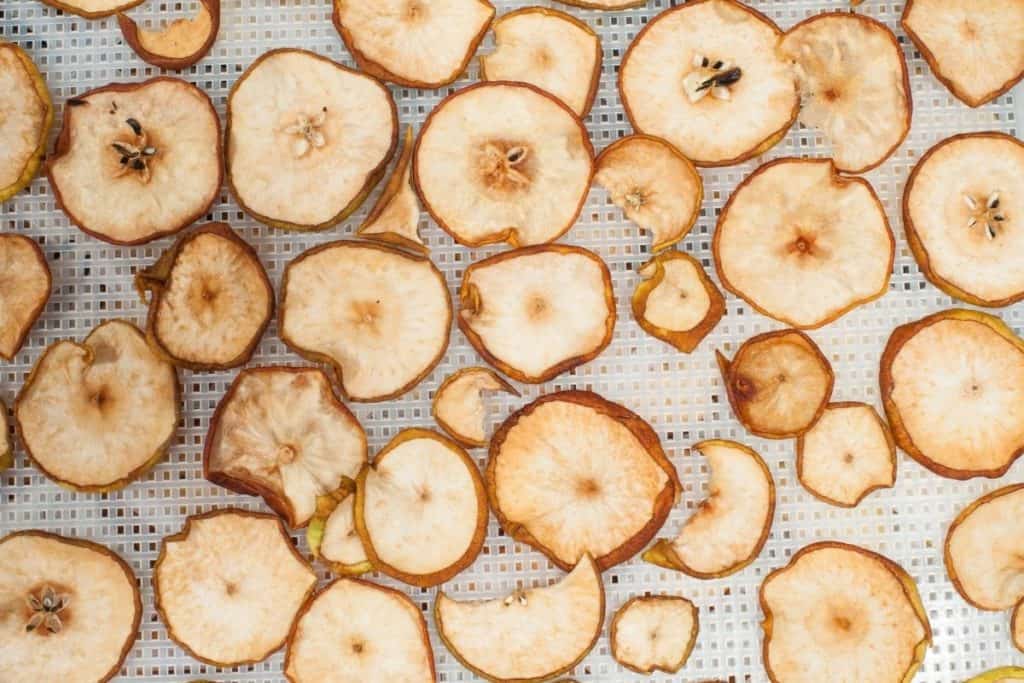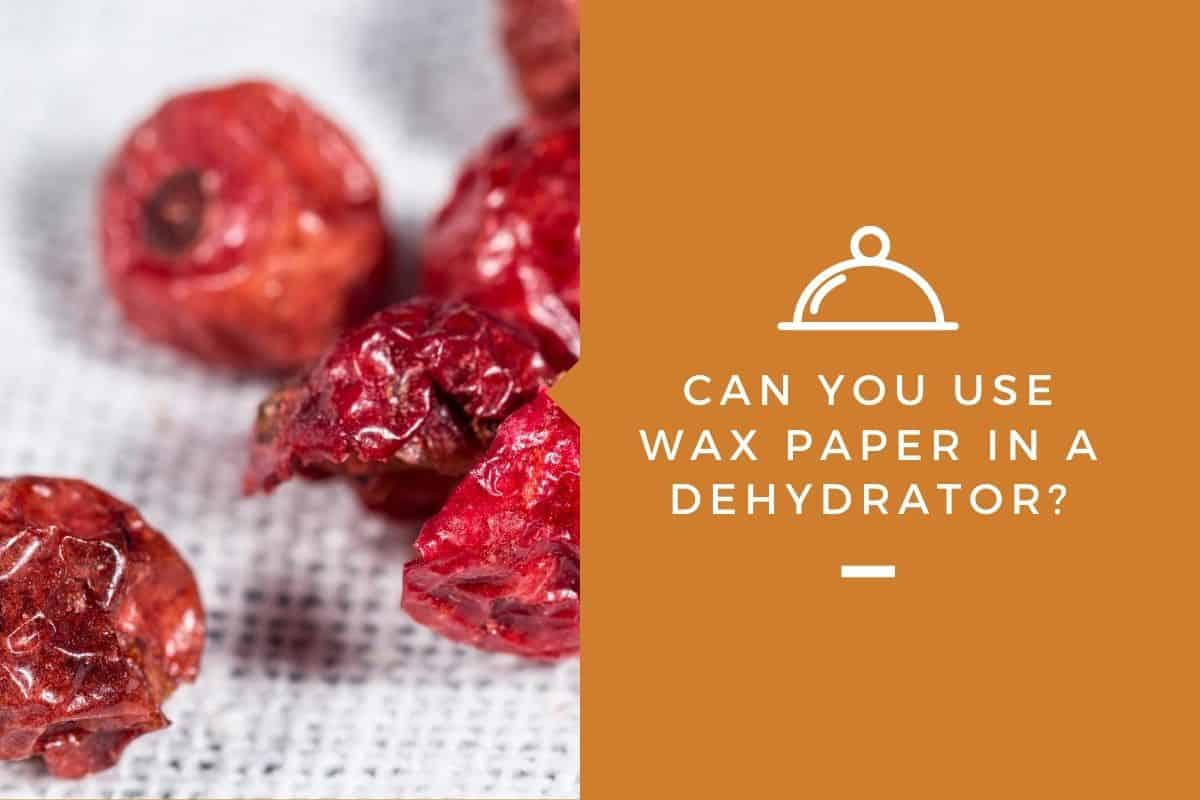If you’ve just come up with the idea to line your dehydrator trays with whatever material you’ve got available at home but still feel a bit unsure about the safety of doing so, then you’ve come to the right place.
Covering your dehydrator trays with a thin sheet to separate your sticky food from the trays is an easy way to save time and make the overall experience of dehydrating much more enjoyable. First, you must make sure that the material used is compatible with the environment in a dehydrator.
Can you use wax paper in a dehydrator? You should not use wax paper in a dehydrator as there are far better alternatives, such as parchment paper or silicone sheets. Wax paper can melt in the dehydrator and fuse together with the foods you’re dehydrating. In addition to that, wax paper may also restrict proper airflow.
Well, that’s two of the main reasons why wax paper shouldn’t be used. I would much rather recommend something more useful. In this article, I’ll cover why wax paper shouldn’t be used and what you should use instead of wax paper in your dehydrator.
What Is Wax Paper?
Wax paper, which is also known as waxed paper or paraffin paper, is a thin sheet of paper that has been coated with wax to make it moisture-proof. It’s commonly used because of its non-stick properties but also used to store food as it keeps water from getting in or out of the foods.
Wax paper shouldn’t be put in ovens, grills, dehydrators, air fryers, or any other cooking appliances resembling these. The truth is that wax paper shouldn’t be heated, that’s not what it’s good for. It has a quite low smoke point, which means it will require much lower temperatures before it starts to produce smoke than, say, parchment paper.
Why Can’t I Use Wax Paper in My Dehydrator?
So, now that we know a little bit about wax paper, let’s go into greater detail as to why it shouldn’t be used to line your dehydrator trays.
The wax will melt and stick to your food
While the food-grade wax paper isn’t toxic, it is still considered a good idea to avoid eating it. Aside from not knowing what kind of chemicals you may encounter in it, it can also alter the taste of the ingredients it sticks to.
While the risk is low, it may combust.
In a dehydrator, the risk of wax paper combusting is extremely low but I would feel bad if I didn’t include it. You never know what could happen. It has low smoke point and and could potentially catch fire at lower temperatures than its substitute, parchment paper – which is heat resistant.
It can interfere with heat circulation
The idea of dehydration is to circulate heated air through the device’s different layers, drying out the ingredients evenly. While wax paper doesn’t prevent the air from circulating, it can still restrict it to some degree.
Using materials that allow air to seep through is important to ensure the entire batch is dried out in a uniform matter.
What’s the Difference Between Wax Paper and Parchment Paper?
Both wax and parchment paper are awesome for easier clean-up in the kitchen, they really are. Aside from that, they’re also good for wrapping foods and separating layers of baked goods. However, if you ask me, parchment paper is just so much better and more useful than wax paper is.
There’s a simple reason for that; parchment paper can withstand high temperatures and can, as a result of that, be used in both the oven and the dehydrator. Most brands of parchment paper can withstand temperatures of up to 420 degrees Fahrenheit.
Anything under that shouldn’t cause the parchment paper to combust or melt.
But how?
Whereas wax paper is coated with soybean or paraffin wax, parchment paper is coated with silicone, which gives it a non-stick, heat-resistant surface, making it far better when it comes to cooking. Wax paper, on the other hand, is better for storing food that has already been cooked – think storing sandwiches, spreading out confections to cool, and wrapping cookies.
Parchment paper will not require any additional oil to keep food from sticking, the same thing isn’t always true for wax paper where you may have to add a little bit of oil to prevent ingredients from sticking. Using less oil will reduce the amount of fat and, in turn, calories too. (Every gram of fat contains 9 calories and oil is a high-fat product).
You may have noticed that some parchment and wax papers come in brown and some in white. That’s because some are bleached and some aren’t. If they are brown, they haven’t gone through the process of bleaching, if they’re white, they have been treated with chlorine to make them brighter.
If you’re looking to restrict or reduce the amount of chemicals that make their way into your home you may want to go for the unbleached papers.
So, Can You Use Parchment Paper in a Dehydrator?

Yes! You can definitely use parchment paper to line your dehydrator trays. In fact, I vouch for them so much that I’d probably say it’s one of the best methods, second to custom-made dehydrator spreadsheets. Unlike wax papers, parchment papers can be used more than one time too. Feel free to use the parchment paper as long as you consider it to be up to standards.
Here’s why I think you should use parchment paper in your dehydrator:
Parchment paper keeps food from falling through the trays
If your food isn’t small enough to fall through the tray’s holes initially, they may be towards the end of the dehydration. But because dehydration is about draining foods of their water-content, they will also shrink in size.
Some foods contain larger amounts of water and may also shrink more than others – making it easier to fall through the cracks. With parchment paper that won’t be a problem. Your food will rest safely on top of the thin layer of paper.
Parchment paper makes it easy to keep your dehydrator clean
Cleaning a dehydrator mainly consists of one thing; scraping food residue from the dehydrator trays. I may be a bit more dramatic than most but it truly is a dreadful sight to witness a dehydrator tray coming out of the dehydrator with an entire batch stuck to it. You just know that that’s 30 minutes to an hour of rough scrubbing. Parchment paper will keep that from happening over and over again.
Simply remove the paper from the dehydrator, pop the ingredients right off, and simply wash your tray under running water and let it dry.
Parchment paper won’t stick to dried food
Some foods, such as sugary fruits, can stick very easily when dehydrated. I’m not saying sugary fruits are the only things to stick when dehydrated, most things can stick to trays when they’ve been in the dehydrator for hours. With parchment paper, removing food is a simple task that rarely requires any scraping.
What Else Can I Use in the Dehydrator Instead of Parchment Paper / Wax Paper?
Now that I’ve praised parchment paper for a good 3-5 minutes, I’m putting all my cards on the table and revealing the fact that there are other alternatives too. With cooking being such a huge market, you know there’s bound to be a fair amount of alternatives to every product available.
When it comes to lining dehydrator trays, the other option that I haven’t yet covered (because the chances of you having this at home are slim when compared to parchment paper) is a silicone dehydrator sheet. They’re available online and come in mesh, which allows warm air to circulate properly.
A returning characteristic for these tray liners is their flexibility. Because they can be bent, fruit, jerky and other foods can easily be popped straight off when they’re finished dehydrating.
They can be cut to fit any size and are reusable. They’re the best alternative but, as I said before, you may not have them at home. I do recommend getting a pack of these though. If you use your dehydrator on a regular basis, you will be pleased.

